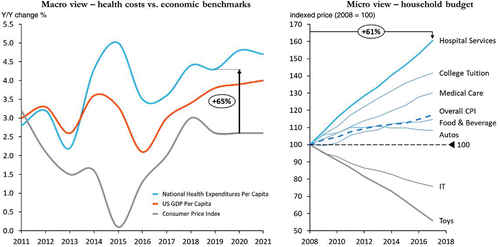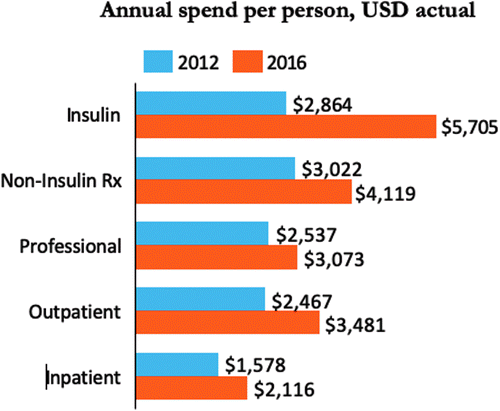Aim of the Paper
The healthcare industry is one of the biggest and most influential in the United States as of today. Its complex structure and billion-dollar turnover facilitate the complicated relationship between medical care system and the economic environment. The objective of this paper is to explain the structure of the physician services, hospital services and pharmaceutical markets from the economic perspective. It also aims to apply the quantitative management tools to devise potential solutions for the optimization of healthcare administration and to evaluate the organizational performance of the industry.
Background Information
The healthcare system in the United States has a history of underperformance when compared to other enterprises. Despite consistent organizational issues, it represents a significant proportion of the national economy with around 4 trillion dollars spending a year (Gang, 137). Both on the level of macroeconomics of the state, and within the scope of the average American household budget, healthcare is one of the biggest costs to be accounted for. As a life-saving service, healthcare industry finds itself at a unique position where economic laws of demand and supply do not apply to it at full. A customer will buy a medicine with the highest price, which he can afford, despite any notions of efficiency and potential cost avoidance. Hence, in the recent discussions of healthcare economics and potential revision of the organizational structure of the industry, the subject of ethics has surfaced repeatedly (Balak and Tisell 75). The inelastic demand for healthcare services, the organizational complexity of the industry and the trend of the medical care constituting a burden for economy summarize the context for this research.
Significance Statement
Recent research suggests that the healthcare industry is organized inefficiently from the economic perspective which results in a significant amount of the resource waste. According to Shark et al. (1502), the United States spend more on the medical care industry than any other country of the world, with up to 18% of GDP. The graphs below indicate the economics burden the healthcare inflicts on from microeconomic and macroeconomic perspective.

At the moment, the evaluation framework for the medical industry is underdeveloped, as both healthcare benchmarking and purely economic analysis fail to fully address the complexity of the industry. Economists struggle to predict inflation rates and overall trends for healthcare market due to the price insensitivity of the patients and the consequent lack of demand elasticity. Furthermore, medical benchmarking can be used to evaluate the performance of the hospital organizations internally, but fails to address its position within the economic environment. A multi-layered analysis is needed to account for the position different healthcare institutions hold within economy.
Healthcare in Current Economic Environment
The financial analysis of the healthcare services is impacted by a variety of factors related to the stakeholders in said industry, namely patients, community, payers, providers, and doctors. Their individual spending and investment decisions affect the development of the healthcare industry on the national level (Hernandez et al. 1627). Patients’ spending decisions are subject to less freedom when it comes to healthcare, then otherwise, especially when paired with the existing health taxes (Lane 5; Vuong 70). Lack of sensitivity to costs amongst buyers accelerates the inflation rates for life-saving drugs, with insulin being the most illustrative case. This drug alone constitutes between 8 and 10 percent within an undoubtedly significant healthcare expenditure (Garg 140). The graph below illustrates the price increase for the insulin dosages between 2012 and 2016.

The insulin situation is a clear example of the structural dysfunction on the pharmaceutical market, where customers’ price insensitivity facilitates corporal power abuse. The main issues include lack of available generic options, the absence of pricing transparency and inaccessibility of this drug trough the cheapest versions of the medical insurance (Desai, 1874). Pharmaceutical economics in the United States is particularly dysfunctional, with patients reporting on skipping their medication due to financial reasons.
Hospital services, physician services and pharmaceutical services have in common their significant market power. Structurally, due to their control of the supply of the often restricted medication and highly qualified services, those agents are able to inflate the prices almost infinitely (Blendon 2489). Within the existing healthcare system, these institutions act as middlemen between patients and their access to life-saving treatments and substances (Mitchell). Physicians, hospitals and pharmaceutical companies follow the economic loop structure: the growth of market power of the intermediates leads to higher prices at the expense of the consumers (Garg 140). The length of the overall chain increases the management difficulty, but, thankfully, creates many opportunities for the cost saving along the way.
Recommendations
Economics as a science is related not only to money, but to the collection of scientific methods that focus on the efficient allocation and utilization of the existing resources. Transparency in the pharmacy pricing and reinvestment into the excess profits into the optimization of the existing supply of medical goods are the key to organizational improvement within the industry. Recent evidence suggests that alternative distribution channels and steps against pharmaceutical re-bates are gaining visibility (Pearson 1045). Furthermore, additional legislation could be devised to limit the existing market power and implement a degree of governmental control over the prices on the life-saving drugs.
Conclusion
In conclusion, inefficiency and high inflation rates within the healthcare industry are the product of the unusually high market power of providers and middlemen. Legal control and alternative distribution might be needed to reduce the waste of resources within the industry. It is important to account for the unique nature and the lack of demand elasticity within this market when designing policies.
Works Cited
Balack, Naci., Tisell, Magnus. “Healthcare Economics”. Ethics in Neurosurgical Practice, edited by Stephen Honeybul, Cambridge University Press, 2020, pp. 73-87.
Blendon, Robert J. et al. “The Upcoming U.S. Health Care Cost Debate — The Public’S Views”. New England Journal Of Medicine, vol 380, no. 26, 2019, pp. 2487-2492. Massachusetts Medical Society.
Desai, Sunita et al. “Association Between Availability Of A Price Transparency Tool And Outpatient Spending”. JAMA, vol 315, no. 17, 2016, p. 1874. American Medical Association (AMA), Web.
Garg, Sandip. The “Economic Health” of U.S. Health Care and Role of Middlemen. Diabetes Technology & Therapeutics, 22 (2). 2020. pp. 136-141. Web.
Hernandez, Inmaculada et al. “Trends In Medicaid Prices, Market Share, And Spending On Long-Acting Insulins, 2006-2018”. JAMA, vol 321, no. 16, 2019, p. 1627. American Medical Association (AMA), Web.
Mitchell, Daniel. “The Pernicious Impact Of Government Intervention In Healthcare, Captured In A Chart | Daniel J. Mitchell”. Fee.Org, 2018.
Pearson, Steven D et al. “Policy Perspectives On Alternative Models For Pharmaceutical Rebates: A Report From The Institute For Clinical And Economic Review Policy Summit”. Journal Of Comparative Effectiveness Research, vol. 8, no. 13, 2019, pp. 1045-1054. Future Medicine Ltd, Web.
Shrank, Whilliam, Rogstad, Theresa, Parekh Natasha. “Waste in the US Health Care System: Estimated Costs and Potential for Savings”. JAMA. 2019;322(15):1501–1509. Web.
Vuong, QH., Ho, TM., Nguyen, HK. et al. “Healthcare Consumers’ Sensitivity to Costs: A Reflection on Behavioural Economics from an Emerging Market”. Palgrave Commun 4, 70, 2018.